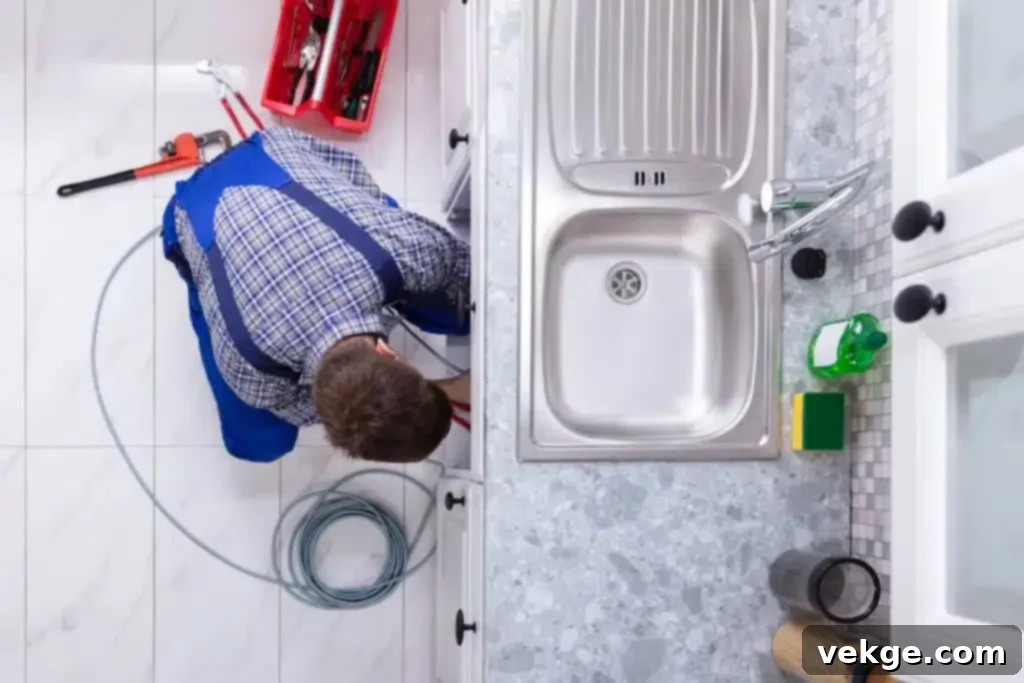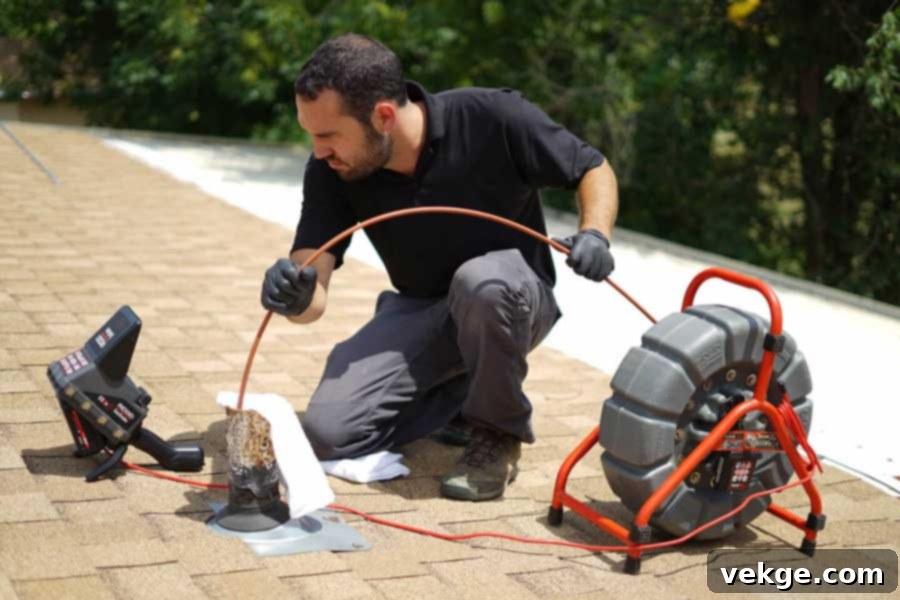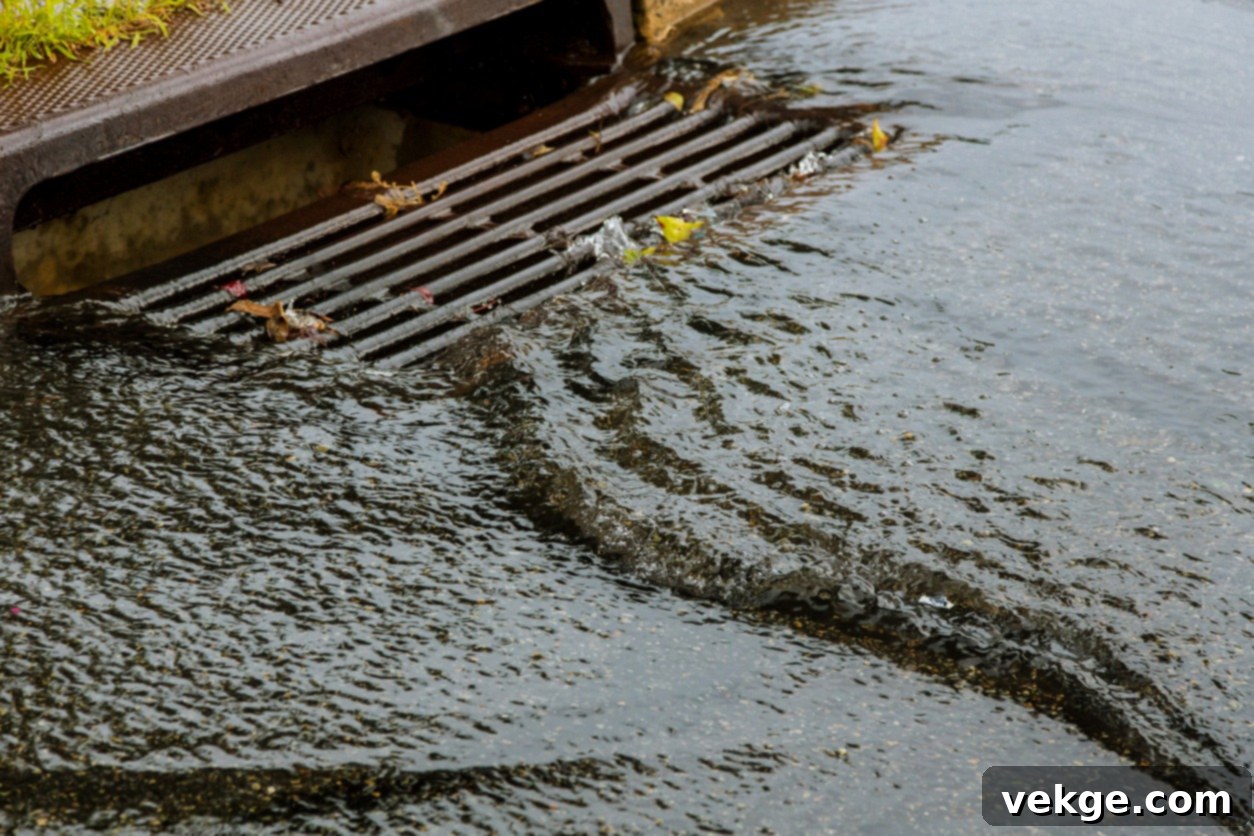Ultimate Guide to Preventing Sewage Backups: Protect Your Home and Health
A sewage backup is undoubtedly one of the most unpleasant and damaging issues a homeowner can face. When wastewater from your main sewer line reverses its flow and floods into your home, it doesn’t just create a horrendous smell; it poses significant health hazards, can cause extensive property damage, and leads to incredibly expensive and disruptive repairs. The contaminated water carries bacteria, viruses, and other pathogens, making cleanup a complex and often professional-only task.
Proactive prevention is paramount to protecting your home, preserving your peace of mind, and ensuring a safe, hygienic living environment. Ignoring the potential for a sewage backup can result in structural damage, ruined possessions, and a significant financial burden. In this comprehensive guide, we will delve into practical, actionable strategies and essential plumbing tips designed to prevent sewage backups before they wreak havoc on your property and well-being. By understanding the common causes and implementing effective preventative measures, you can keep your plumbing system in optimal condition and avoid a crisis.
1. Understand the Warning Signs of an Impending Sewage Backup
Before diving into preventative actions, it’s critical to become familiar with the subtle yet significant warning signs of a potential sewage backup. Early detection is your best defense against a minor issue escalating into a major disaster. Common indicators often include a combination of:
- Slow Drains: If multiple drains in your home (e.g., sinks, showers, toilets) are draining slowly, it’s often a sign of a blockage developing further down your main sewer line, rather than just a localized clog.
- Gurgling Noises from Pipes: Unusual gurgling sounds emanating from toilets or drains when water is being used elsewhere in the house can indicate trapped air caused by a partial blockage in the sewer line.
- Foul Odors: Persistent, unpleasant smells (often described as rotten eggs or sewage) coming from drains or even your yard, especially after flushing a toilet or running water, are a strong red flag of sewer gas escaping due to a clog or breach in the system.
- Water Backing Up into Other Drains: This is a definitive sign of a problem. For example, if flushing a toilet causes water to back up in your shower, or running your washing machine causes the toilet to overflow, it indicates a significant blockage preventing proper drainage through the main sewer line.
- Sewer Odors in the Yard: A strong, persistent sewer smell around your property, especially near your sewer cleanout or where your sewer line runs, can signal an outdoor blockage or a damaged pipe.
If you notice any of these symptoms, particularly if they are happening in multiple fixtures or areas of your home, it could be an early and urgent sign of a problem that demands immediate professional attention. Ignoring these warnings can lead to a full-blown backup, which is far more costly and damaging to rectify. The cost of sewer line leak repairs can vary significantly based on several factors, including the location of the leak, the specific repair method required (such as advanced trenchless techniques), and the overall extent of the damage. Addressing leaks and backups early, while they are still minor issues, can prevent these costs from spiraling, making vigilance for warning signs incredibly important.
2. Keep Grease, Oils, and Non-Flushable Items Out of Drains

One of the most pervasive and easily preventable causes of sewage backups originates from improper use of your home’s drainage system. Many homeowners unintentionally contribute to significant blockages by pouring seemingly harmless substances down their kitchen sinks or flushing inappropriate items down toilets. Over time, these actions lead to severe clogs that can cause wastewater to reverse course.
Grease, Oils, and Fats (FOG): When hot, these substances appear liquid, but as they cool, they solidify and adhere to the interior of your pipes. This sticky residue gradually accumulates, acting like glue for other debris and creating formidable blockages. To prevent this, never pour cooking grease, oils, or fats down the drain. Instead, collect them in an old jar, can, or disposable container, let them solidify, and then dispose of them in the trash. Even using hot water and soap doesn’t fully mitigate the problem, as FOG will eventually cool further down the line.
Non-Flushable Items: Your toilet is designed only for human waste and toilet paper. Many common household items, even those marketed as “flushable,” do not break down in water and can cause severe blockages. These include:
- Wet Wipes (even “flushable” ones): These are a primary culprit for clogs, as they contain synthetic fibers that do not disintegrate like toilet paper.
- Feminine Hygiene Products: Tampons, pads, and panty liners expand when wet and can easily snag in pipes.
- Paper Towels and Tissues: These are thicker and more durable than toilet paper and do not break down efficiently.
- Dental Floss: Floss is non-biodegradable and can wrap around other debris, creating larger clogs.
- Cotton Balls and Swabs: Like wipes, these absorb water and can snag.
- Hair: Often accumulates in shower drains, but flushing hair can also contribute to deeper blockages.
- Medications: Never flush medications; they contaminate the water supply and can also contribute to blockages.
- Cat Litter: Even “flushable” cat litter can expand and cause significant plumbing issues.
Always dispose of these items in a trash can. Educating all household members about what can and cannot be flushed is crucial for maintaining a healthy plumbing system and preventing costly backups.
3. Install a Backwater Valve for Enhanced Protection
A backwater valve is a relatively simple yet incredibly effective device that can provide an essential layer of protection against sewage backups. Installed in the main sewer line leading out of your home, this one-way valve is designed to close automatically when it detects a reversal in the flow of water. This mechanism prevents sewage from municipal lines or overloaded private systems from flowing back into your property.
This type of valve is particularly important if your home is situated in a low-lying area, a region prone to heavy rainfall, or if your local municipal sewer system is known to become overwhelmed during severe storms. When the public sewer system reaches capacity, pressure can build, pushing wastewater back up the private sewer lines of homes connected to it. A properly installed backwater valve acts as a barrier, sealing off your connection to the main sewer line and stopping the backflow.
While many local building codes now mandate the installation of backwater valves in new home constructions, older homes often lack this vital safeguard. If your house doesn’t have one, installing a backwater valve is a wise and often critical investment. It offers peace of mind and can save you from devastating water damage and health hazards. Consult with a professional plumber to assess your home’s needs and ensure proper installation, as incorrect installation can compromise its effectiveness.
4. Schedule Regular Sewer Line Inspections and Maintenance

Proactive and consistent maintenance of your sewer line is absolutely essential for preventing unexpected and often catastrophic backups. Over time, sewer pipes are susceptible to various issues such as tree root infiltration, accumulation of debris, shifting ground, corrosion, and structural damage. These issues can lead to partial or complete blockages, significantly slowing drains and eventually causing sewage to back up into your home.
Hiring a qualified professional to inspect your sewer lines every few years, or more frequently for older homes or properties with mature trees, can help catch these problems in their nascent stages. During a professional inspection, plumbers utilize specialized tools, most commonly a high-definition sewer camera. This small, waterproof camera is snaked through your sewer line, providing a live video feed of the pipe’s interior. This allows the plumber to:
- Identify any signs of developing blockages, such as grease buildup or accumulated debris.
- Detect tree root intrusions, pinpointing their exact location and extent.
- Locate cracks, fractures, misaligned joints, or other structural damage to the pipes.
- Assess the overall condition and integrity of your sewer system.
Regular inspections provide invaluable insights, enabling you to address potential issues before they escalate into costly emergencies. For instance, detecting minor root intrusion early allows for targeted removal, preventing roots from completely obstructing or collapsing the pipe. This proactive approach helps you avoid the inconvenience, health risks, and significant financial burden of emergency repairs and major sewage backups.
5. Be Mindful of Tree Roots and Their Impact on Sewer Lines
Tree roots are a surprisingly common and aggressive cause of sewer line blockages and damage, making them a significant concern for homeowners. As trees grow, their root systems naturally seek out sources of water, nutrients, and oxygen. Your sewer lines, which often contain nutrient-rich wastewater, become an incredibly attractive target, especially if there are any existing cracks, loose joints, or microscopic entry points in the pipes.
Once roots infiltrate the pipes, they continue to grow, expanding and creating dense masses that act like sieves, trapping grease, sediment, and other debris. This leads to severe blockages and can eventually exert immense pressure on the pipes, causing them to crack, collapse, or become severely misaligned. Certain tree species, such as willows, elms, maples, and oaks, are known for having particularly aggressive and far-reaching root systems, making their proximity to sewer lines a higher risk.
If you have mature trees planted near your sewer lines, especially within 10-20 feet, it is highly advisable to have a professional plumber assess their potential for causing damage. If roots are detected within your pipes during an inspection, a plumber can employ several methods to address the issue:
- Hydro-Jetting: High-pressure water jets can effectively cut through and dislodge root masses, clearing the pipe.
- Auger (Sewer Snake) with Cutting Blades: Mechanical augers equipped with specialized cutting blades can be used to chop up and remove roots.
- Chemical Root Killers: These can be applied to inhibit root growth within the pipes, though they are usually a temporary solution and not suitable for all situations.
- Root Barriers: For ongoing prevention, physical root barriers can be installed in the ground to deflect root growth away from sewer lines.
In severe cases of repeated root intrusion or significant pipe damage, the affected section of the sewer line may need to be repaired or replaced. When landscaping, always consider the proximity of new tree plantings to underground utility lines to prevent future root-related problems.
6. Implement Strategies to Avoid Heavy Rainfall Overflows

Heavy and prolonged rainstorms can place immense strain on both municipal sewer systems and your home’s private drainage infrastructure, often leading to potential sewage backups. While controlling the weather is impossible, there are several proactive steps you can take to significantly minimize the risk of a backup caused by an overwhelmed drainage system during severe weather events.
- Maintain Gutters and Downspouts: Ensure that your gutters and downspouts are kept clear of leaves, twigs, and other debris. Clogged gutters can cause rainwater to overflow and pool around your foundation, potentially seeping into your basement or overwhelming your property’s drainage. Downspouts should also extend several feet away from your foundation to direct water far from your home.
- Ensure Proper Property Grading: Critically, your property’s grading should slope away from your foundation. If the ground slopes towards your house, rainwater will naturally collect against the foundation, increasing the risk of water intrusion into your basement or crawl space, and potentially overwhelming your perimeter drains. A minimum slope of 1 inch per foot for at least 6-10 feet away from the foundation is generally recommended.
- Install or Maintain Sump Pumps: For homes with basements or crawl spaces, a sump pump is a vital defense against flooding. It collects excess groundwater that accumulates in a sump pit and pumps it away from your home. Ensure your sump pump is regularly tested and maintained, and consider installing a battery backup system to keep it operational during power outages.
- Consider Exterior Drainage Systems: For properties with persistent water issues, investing in exterior drainage solutions can be highly beneficial. French drains, which are trenches filled with gravel and a perforated pipe, effectively collect and redirect subsurface water away from your foundation. Catch basins can also be strategically placed to collect surface runoff from problem areas.
- Check with Your Municipality: Understand your local municipal sewer system’s capacity and potential for overflow during heavy rains. In some cases, improvements to the public system might be necessary or available.
By effectively managing rainwater around your property, you can reduce the load on your entire drainage system and significantly lower the risk of water infiltration and associated sewage backups.
7. Act Quickly to Address Any Leaks or Blockages
One of the most critical pieces of advice for preventing a sewage backup is to never ignore the early warning signs discussed earlier. If you detect any indication of a sewer line leak, a slow drain that doesn’t clear, or suspect a blockage is forming, it is imperative to act quickly and decisively. Delaying action or attempting DIY fixes for serious issues can worsen the problem exponentially, potentially leading to a full-blown and highly destructive sewage backup.
Whether you’re observing persistent slow drains in multiple fixtures, noticing foul odors, or have reason to suspect issues like tree root intrusion, do not hesitate to contact a professional plumber. Experienced plumbers have the diagnostic tools and expertise to accurately identify the source of the problem and recommend the most effective and lasting solution. They can differentiate between a simple clog and a more severe sewer line issue, preventing misdiagnosis and ineffective repairs.
Being proactive about repairs is also a profoundly smart financial move. Addressing minor plumbing issues or nascent blockages early on can save you a substantial amount of money and stress in the long run. For example, the cost of fixing a small, localized sewer line leak or clearing a minor root intrusion with hydro-jetting is significantly less than the expense involved in replacing an entire section of pipe after a major collapse, or undertaking extensive remediation after a catastrophic sewage backup has flooded your home. Investing in timely repairs protects your property from severe damage, preserves your home’s value, and safeguards your family’s health.
Conclusion
Sewage backups represent one of the most dreaded and damaging events a homeowner can encounter, bringing with them health risks, extensive property damage, and significant financial burdens. However, by adopting a proactive mindset and implementing the right preventative measures, you can dramatically reduce your risk and protect your home from these unpleasant disasters. From diligent daily habits to strategic long-term investments, safeguarding your plumbing system is an essential aspect of responsible homeownership.
By committing to simple practices like keeping grease and non-flushable items out of your drains, investing in a backwater valve for added protection, and scheduling regular sewer line inspections, you empower yourself to prevent issues before they escalate. Coupled with being mindful of tree roots near your lines and actively managing heavy rainfall around your property, these steps form a robust defense against sewage backups. Remember, early detection and prompt action on any warning signs are crucial. Taking these comprehensive steps will ensure your plumbing system remains healthy, your home stays safe and dry, and your peace of mind is preserved for years to come.
